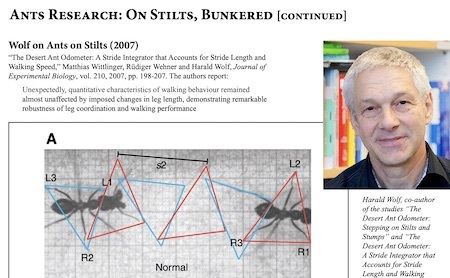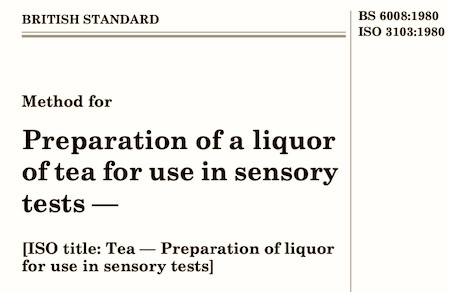Marc Abrahams's Blog, page 113
June 30, 2020
Ants on stilts, and ants hunkered in a bunker
Ants on stilts, and Wolf on ants on stilts, and ants trapped and hunkered in an old bunker have the spotlight in three ant research studies featured in the “Ants Research” column in the special Small Animals issue (vol. 26, no 3) of the Annals of Improbable Research.

June 29, 2020
Small Animals special issue of Improbable Research
The special Small Animals issue (volume 26, number 3) of the magazine is chock full of improbable research about small animals.

Lip-pumping invention avoids “ducky” lips [new patent]
“Although useful for their intended purpose, currently available lip pumps can have negative side effects. After use, some lip pumps will leave unattractive marks, bruising, indentations, and grooves around a user’s lip area. In addition, some lip pumps continuously apply suction to both lips. Unfortunately, these types of lip pumps can cause misshaped lips and fail to address various lip problems. A user who only wants to increase a smaller lower lip, for example, may come away with a “ducky” upper lip that appears similar to a duck bill.“
A newly patented invention from Dr Thienna Ho of San Francisco, US, provides a method to avoid such things. The patent document first gives a general background on why some people might consider lip pumping as an option.
“Lip size and shape are facial features, which directly impact attractiveness levels. Many believe a person’s lips and smile to be an indicator of beauty. Full lips, especially in Western cultures, are considered attractive. Some suggest that the trend towards fuller lips developed because lips become less full with age. As one ages, gravitational effects and atrophy of tissue and muscles on and surrounding the lips often lead to lips which appear deflated and disproportionate. Fuller lips, however, are often associated with a healthy lifestyle, youth, and beauty.
[…]
In one study, it was found that men give more attention to women with fuller lips. Women having “luscious pouts” were found to attract more attention from men compared to thin-lipped women. In this same study, lips were found to represent one of the most sensual areas on a woman’s body and serve as a biological indicator of a woman’s health and fertility.”
The document goes on to describe the ‘lip shaper’ elements that are new to lip-pump prior art.
“A lip shaper may include one or more contouring elements that change the shape of a user’s lip(s). Various types of lip shapers may be included in the lip shaper assembly, depending on the shaping and contouring desired by a user. One type of lower lip shaper may be configured to form a fuller, unitary lower lip lobe, while another type of lip shaper may be configured to form two fuller, lower lip lobes, using a creaser element coupled to the lower lip shaper. Also a central platform may be coupled to either a lip shaper such that the upper and lower lips are at least partially separated during use of the lip enhancement and enlargement device.”
See: US patent 10,682,278 B2, Jun. 16Th, 2020
Notes:
● Unfortunately, The patent document doesn’t provide any cited reference to the “luscious pouts” study.
● The invention, in various variants, is currently available to purchase, being marketed under the tradename CandyLipz®
● The story of the invention can be read here.
● Dr. Ho holds the Guinness Book of Records® records for the Longest Samson’s chair (static wall sit) and the Heaviest sumo deadlift in one hour (female).
● The device can, of course, also be used by men – as the ‘before and after’ photos [above] from the patent document show.
Research research by Martin Gardiner

June 27, 2020
Pocket-Sized #1017: “Normally Chasing Their Tails”
Normally Chasing Their Tails
In this Pocket-Sized episode #1017, Marc Abrahams shows an unfamiliar research study to Dany Adams. Dramatic readings and reactions ensue.
The research mentioned in this episode is featured in the Dogs (and Cats) issue (Vol. 21, #4) of the Annals of Improbable Research Magazine.

Remember, our Patreon donors, on most levels, get access to each podcast episode before it is made public.
1. Dany Adams encounters:
“A Vicious Cycle: A Cross-Sectional Study of Canine Tail-Chasing and Human Responses to It, Using a Free Video-Sharing Website,” Charlotte C. Burn, PLoS ONE, vol. 6, no. 11, 2011, e26553.
Seth Gliksman, Production Assistant
Available on Spotify, Apple Podcasts, Overcast, Google Podcasts, AntennaPod, BeyondPod and elsewhere!

June 26, 2020
Five minutes about the Igs
Science Khana takes a five-minute video look at the Ig Nobel Prizes:

Research About Coffee-and-Health is Often and Easily Confounded
It’s easy to say that coffee has a good or bad effect on people’s health, but it’s not easy to know, suggests a study about studies about whether coffee has a good or bad effect on people’s health.
The study is: “Dietary research on coffee: Improving adjustment for confounding,” David R. Thomas, Ian D. Hodges, Current Developments in Nutrition, 2019, nzz142. The authors, at the University of Auckland, and at HealthSearch Limited, New Zealand, explain:
this narrative review critically evaluated the methods and analyses of cohort studies investigating coffee and mortality. A specific focus was adjustment for confounding related to smoking, healthy and unhealthy foods and alcohol. Assessment of 36 cohort samples showed many did not adequately adjust for smoking. Consuming 1–5 cups of coffee per day was related to lower mortality among never smokers, in studies which adjusted for pack-years of smoking, and studies adjusting for healthy and unhealthy foods. Possible reduced health benefits for coffee with added sugar have not been adequately investigated. Research on coffee and health should report separate analyses for never smokers, adjust for consumption of healthy and unhealthy foods, and for sugar added to coffee.

June 24, 2020
Prize-winning British specification: The proper way to make a cup of tea
The 1999 Ig Nobel Literature Prize was awarded to The British Standards Institution, for its six-page specification (BS-6008) of the proper way to make a cup of tea.
BS-6008 is now, in the year 2020, available for sale at a price of £110.00 per copy from the British Standards Institution, which now calls itself BSI.
Cross About Tea
There seems to be disagreement, newly flaring, as to the proper British way to make a cup of tea. The Guardian reports on this, with the headline:
US woman sparks transatlantic tea war with brutal online brew
Michelle from North Carolina shared her recipe for ‘British tea’. An international incident followed
Michelle from North Carolina made this video, which was the butterfly that caused the potted tea tempest:

Podcast Episode #213: “The 29th 1st Annual Ig Nobel Prize Ceremony”
The 29th 1st Annual Ig Nobel Prize Ceremony of 2019
In episode #213, Marc Abrahams presents the 29th 1st Annual Ig Nobel Prize Ceremony which took place at the Sanders Theatre at Harvard University in 2019. This is a truncated form of the full ceremony to make for better radio, but the full event can be viewed here.
Remember, our Patreon donors, on most levels, get access to each podcast episode before it is made public.
1. We all encounter:
Ceremony details are online at Improbable Research.
Bruce Petschek, Audio Engineer
Jon Shedler, Audio Engineer
Seth Gliksman, Production Assistant
Available on Spotify, Apple Podcasts, Overcast, Google Podcasts, AntennaPod, BeyondPod and elsewhere!
COMING ATTRACTION: The next Ig Nobel Prize ceremony—the 30th First Annual, on September 17, 2020—will be a little different from its 29 predecessors.

June 23, 2020
Respecting the prize-winning dignity of plants, in Barcelona
Barcelona’s Gran Teatre del Liceu opera house perhaps demonstrated, better than has ever been demonstrated, a principle that is part of the legal system in Switzerland: the principle that plants have dignity. We strongly urge you to watch the performance.

Barcelona opera house reopens with performance to 2,292 plants
It’s not uncommon for performances at Barcelona’s Gran Teatre del Liceu opera house to be sold out, but musicians played to an unusual audience on Monday to mark Spain’s lifting of lockdown — as thousands of plants filled its seats….
A total of 2,292 plants were packed into the theater, while the string quartet performed Puccini’s “Crisantemi,” according to a statement from the [organizers].
Although humans were not present in the audience, spectators could watch the “Concierto para el bioceno” via livestream….
EuroNews presents this video report:
The Legal Principle that Plants Have Dignity
The 2008 Ig Nobel Peace Prize was awarded to The Swiss Federal Ethics Committee on Non-Human Biotechnology (ECNH) and the citizens of Switzerland, for adopting the legal principle that plants have dignity.
The committee documented its research, in a study called “The Dignity of Living Beings With Regard to Plants. Moral Consideration of Plants for Their Own Sake”
The Barcelona Concert
The concert in Barcelona is truly moving, whether you are a plant (and yes, plants do move, as demonstrated by Jagadish Chandra Bose) or an animal. Here is video of the full performance:

June 22, 2020
Connections: Persian Rugs and Morton Feldman’s music [study]
Does listening to Morton Feldman’s ‘Crippled Symmetry’ suite (above) remind you of a Persian rug? If not, you may not be attuned to Feldman’s repetitions and variations – which, on closer inspection, may, it’s said, in some senses, resonate with patterns on rugs. But, academically speaking, possible common threads have not been studied in much detail – until now.
“Repetition and variation are the main strategies in Feldman’s music. These are the features he extracted from observation of a rug design and connected Oriental weaving rug pattern to Western music notation, which are rarely studied by researchers.”
– explain A.A. Javadi, M. Fujieda of the Faculty of Design, Kyushu University, Japan in a paper for the International Journal of Music Science, Technology and Art (IJMSTA) – Vol. 2 – Issue 1 – January 2020
The researchers asked themselves :
“Are the elements and principles in music (repetition and rhythm) related to the same elements and principles in weaving Persian rug design?”
And, to find out, the team performed a close reading of several rugs (see illustration below) making comparisons with Feldman’s music (e.g.‘Crippled Symmetry’) – and conclude that, yes, they are.
“Our studies reveal the relationship between repetition and symmetry in both the pattern of Persian rugs and the Feldman musical approach in his composition.”
See : A Study on the Rug Patterns and Morton Feldman’s Approach
Research research by Martin Gardiner

Marc Abrahams's Blog
- Marc Abrahams's profile
- 14 followers









